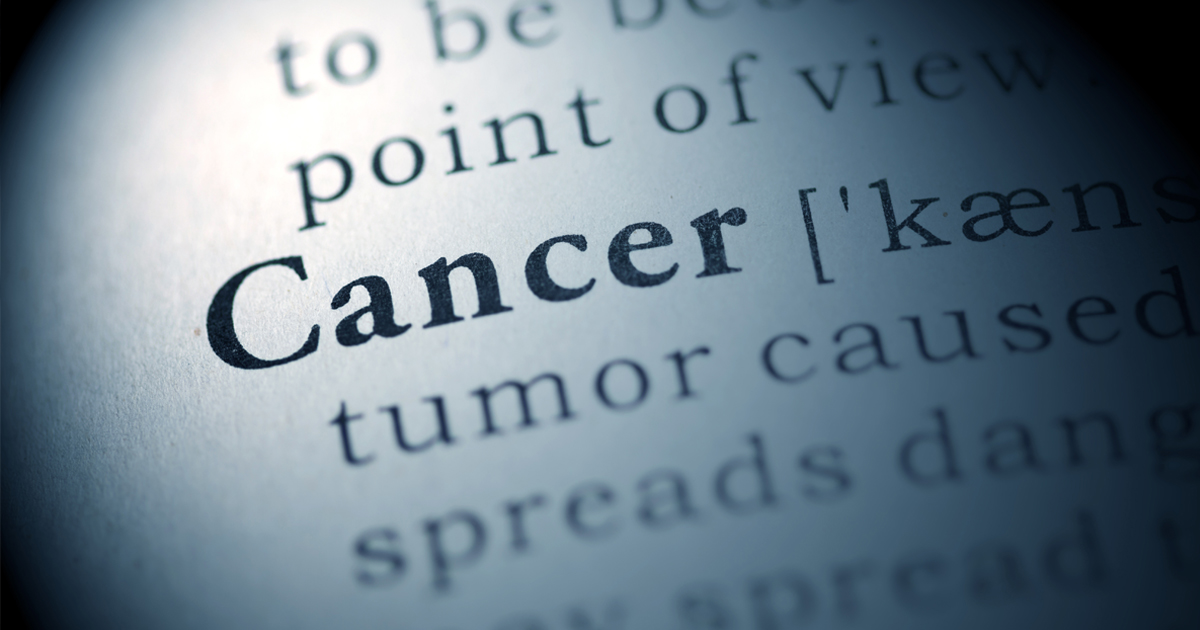
Learning the language of cancer can be challenging. For many patients and caregivers, it’s a jumbled mix of immuno-this and onco-that. Many patients stumble over sound-alike terms and indecipherable phrases, unpronounceable words made worse by assumptions and conclusions often made in frustration or for fear of asking too many questions. There can't be that much difference in genetics or genomics, right? Hodgkin and non-Hodgkin diseases aren’t that different, correct? And lung cancer is cancer in the lung, yes? Well, no.
Nuances in cancer types, terms and titles may indicate deep differences in the diseases, diagnoses and treatments. The small-cell prefix "non" can make huge differences in a patient's care plan and prognosis. To help cut through the confusion, the CancerCenter360 blog developed an occasional series called, “What's the difference?” This compilation of blogs is designed to help clear up some of the confusion in cancer vocabulary and help increase your cancer IQ. Below are summaries of the series installments from 2017.
Genetics and genomics
Although commonly used interchangeably, the terms “genetics” and “genomics” are not synonyms. Both involve the study of genetic material, and both are derived from the Greek word gen, which means birth or origin. But the similarities largely end there. Though genetics and genomics are each complex topics, the difference between them is much simpler: Genetics is the study of the genes people inherit at birth, passed on from their family through the generations. Genomics refers to the study of mutations in the tumors themselves that may drive various cancer behaviors. Tests—those mapping a person’s DNA profile and those analyzing a tumor’s genomic abnormalities—may be helpful in treating cancer.
Learn more about advanced genomic testing
B-cells and T-cells
When the body is invaded by bacteria, a virus or parasites, an immune alarm goes off, setting off a chain reaction of cellular activity in the immune system. The body may deploy macrophages or other innate immune cells, such as basophils, dendritic cells or neutrophils, to help attack the invading pathogen. Those cells often do the job, and the invader is destroyed. But sometimes, when the body needs a more sophisticated attack, it turns to its T-cells and B-cells. These cellular troops are the special ops of the immune system—a line of defense that uses past behaviors and interactions to learn to recognize specific foreign threats and attack them when they reappear. They may also play a critical role in the development and treatment of cancer.
Learn more about B-cells and T-cells
Small cell and non-small cell lung cancer
Diagnosing and treating lung cancer require far more than measuring the size of cancer cells under a microscope. But those sizes are a critical first step in understanding the distinction, scope and extent of the disease and its treatment options. That’s because, even today, lung cancers are generally divided into two categories: small cell (SCLC) and non-small cell (NSCLC), named when pathologists first differentiated lung cancers by the size of the affected cells. "The traditional diagnosis was based on pure pathology," says Shayma Master Kazmi, MD, RPh, Hematologist-Oncologist and Medical Oncologist at our hospital in Philadelphia. "They found that the cancer cells were either small cells, or they were larger cells, such as adenocarcinomas or squamous cells. And so they simply got grouped into those separate categories, small cell or non-small cell cancer."
Learn more about treatments for lung cancer
Hodgkin lymphoma and non-Hodgkin lymphoma
With a common origin, similar symptoms and a shared name, Hodgkin lymphoma and non-Hodgkin lymphoma are easy to confuse. Both cancers originate in the lymphatic system, the body's network of lymph nodes that dispatch white blood cells called B lymphocytes. These cells produce antibodies that help us fight off infections. Patients with either cancer may experience extreme fatigue, weight loss and loss of appetite, fever and sweats and other common symptoms. And both are named for Dr. Thomas Hodgkin, the groundbreaking researcher who chronicled symptoms of the diseases. But the differences between the two are telling, too.
Learn more about the types of non-Hodgkin lymphoma
Endometrial cancer and uterine sarcoma
Gynecologic cancers do not get the kind of public attention other cancer types do. September is Gynecologic Cancer Month, but you’re unlikely to see many purple ribbons, fundraisers or walks to raise awareness for the cause. Compared to breast cancer and its pink takeover during its awareness month in October, gynecologic cancers—cervical, ovarian, uterine (endometrial), vaginal and vulvar— are much lesser known. And yet, more than 100,000 women will be diagnosed with gynecologic cancers in 2017.
Learn more about why boys should get the HPV vaccine
Skin cells: melanocytes and basal, squamous and Merkel cells
Consider the remarkable functions the skin performs every day. It's only 1.5 millimeters at its thickest point, but it protects the muscles and organs from outside threats. It can take a pounding, enduring bumps and bruises, the sun’s burning rays and the grime left by dirt and dust. It moves and stretches when you do, but even when the body is at rest, the skin is a bustle of cellular activity. The skin is the body's largest organ, and like other organs, it can develop cancers. Skin cancer is the most common cancer in the United States, affecting more than 3 million people a year. But treatments and prognoses vary greatly, depending on the affected cells.
Learn more about treatments for melanoma
The CancerCenter360 blog:
The CancerCenter360 blog features various series developed to inform patients and caregivers and educate readers on the recent research and developments in cancer treatment. The series include:
- How does cancer do that?, a look at the science behind cell behavior and cancer's complex mechanisms of survival.
- What I wish I knew, sharing stories, experiences and takeaways from survivors on what they learned during their cancer journeys.
- The integrative care connection, exploring how supportive care therapies may help cancer patients handle the stress and side effects of cancer.
- Busting myths, dispelling some widely held misconceptions about certain aspects of cancer.


